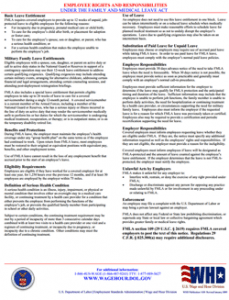

Just over twenty years ago the groundbreaking Family and Medical Leave Act was signed into law by President Bill Clinton. This law allows individuals the flexibility to balance the care of family members with their employment, without worrying about job loss. In fact, in a recent survey about the law both workers and employers reported overall positive experiences with FMLA.
No matter the positive changes, even after twenty years, FMLA regulations come with challenges for employers. It remains important for both employees and employers to understand their rights under the FMLA to ensure that its regulations are followed appropriately. Proper documentation of regulatory procedures is important to protect both the employer and the workers who use FMLA leave.
FMLA Regulations and Provisions
The Family and Medical Leave Act provides employees with up to 12 weeks of unpaid leave to treat a medical illness, or care for an immediate family member such a spouse, parent, newborn or newly adopted child. It also guarantees job security in that the employee will be returned to their position or one on the same level after leave is completed. To qualify, an employee must have worked at least 12 months for the employer, and must have at least 1,250 hours worked during those 12 months.
Some details of FMLA vary by state, and employers need to be aware of these differences. For example, the federal law specifies that an employer must have at least 50 employees for one to claim FMLA leave, but some individual states have reduced the employee threshold to a lower number to cover smaller businesses. There are also states where in-laws, domestic partners, and grandparents are considered immediate family. It’s important for an employer to know the federal law and the associated state regulations. The law still poses challenges for businesses, especially regarding:
- Administration and documentation of intermittent leave days
- Questionable medical leave certification
- Determination of employee eligibility across work sites
Clear Communication and Documentation
Employers should have documented guidelines in place to give employees upon FMLA leave request, to insure the law is followed correctly. Federal law does not require it, but employers can ask for physician verification of the need for leave, and whether leave will be a block period or used intermittently. However, employers cannot request additional information from a physician beyond what is stated upon the documentation form.
Some employers require personal paid leave be used prior to FMLA, but it does not count against the full 12 weeks of FMLA. Employers should advise their employees if they have a call-in policy for intermittent leave, and how it should be used. Does an employee need to call in every time to use FMLA? What should they say if leaving a message in order to adequately document the leave? Clarifying these steps ahead of time protects both the employee and the employer from abuse of the act and from possible lawsuits.
The attorneys at the law firm of Hecht Walker recommend a proactive approach to company FMLA policy, with clear documentation and eligibility guidelines for personnel. If it has been a few years since your organization examined your FMLA policies, now may be a good time for preventative legal steps from a business attorney.
Workers who are able to take time off to deal with illnesses and adequately care for new or ill family members report more job satisfaction than those denied this ability. Happier workers result in higher productivity and better profits for companies who employ them. The FMLA process may seem complex, but through proper documentation and communication the process should run smoothly and protect both parties from confusion or potential legal complications.
